Dachshunds are prone to several neurologic disorders, including seizures and epilepsy.
Earlier this year, My Dachshund Summit’s breeder messaged me and said that one of Summit’s siblings just has a seizure. She was letting me know because the cause can be genetic.
I tried not to worry – Summit hadn’t shown any signs and she was almost 5 years old.
I know that seizures can come on suddenly though, so I reviewed my files on what to do if your Dachshund has a seizure.


It’s important to know, so I wrote this article to share some information about what Dachshund seizures look like, what to do if your dog has a seizure, and what to do afterward.
What is a Seizure?
A seizure, also known as a convulsion or epileptic episode, is a sudden and uncontrolled burst of electrical activity in the brain.
This abnormal electrical activity can lead to a wide range of physical and behavioral symptoms, which can vary in severity and duration.
There are three phases of dog seizures:
- Pre-ictal phase (aura): Dogs probably experience something similar and may become restless, exhibit unusual behaviors, or stare vacantly into the distance.
- Ictal phase: This is the seizure itself. This is the stage when the symptoms and signs will be most obvious.
- Post-ictal (recovery) phase: After the seizure has ended; dogs may be lethargic, restless, unsteady on their feet, or even temporarily blind. This stage usually lasts for a few minutes to a few hours.
For more information on these phases, read this article from PetMD.
What Can Trigger Dog Seizures?
As with humans, seizures in dogs are caused by a misfiring of the brain or an imbalance of brain chemicals.
This misfire can occur due to infections, toxins, metabolic disorders, a genetic condition, or more.
It can also occur due to certain triggers, which make them more likely to occur.
These triggers include:
- Stress
- Over-excitement
- Certain foods
- Environmental factors
What Does a Dog Seizure Look Like?
The first time I saw a Dachshund have a seizure, it was subtle.
I probably only knew what it was because I had been recently studying seizure disorders in Dachshunds.
I was dog sitting and the guest Dachshund was at my feet under my desk.
I felt this repetitive tapping, and when it started to feel excessive, I looked down to find that the dog was stiff, slightly swaying in a rhythmic pattern, and his eyes looked a little vacant like he was staring into space.
Sometimes, seizure signs are a little more obvious though.
A reader shared this story with me:
“I was fostering a sweet little dapple male Doxie.
I came into the kitchen and found him, apparently lifeless, on the floor with foam around his mouth.
Naturally I picked him up and telephoned the on-call vet who began talking me thru it.
While I was on the phone, he started breathing again and, by the time I was off the phone – about 10 minutes from finding him “lifeless” – he was wriggling to get down and went off to play.
It was very disturbing.
The vet explained “doxie seizures” to me and we were able to give the forever family a heads-up as to when they should get worried.
I was told most of these are harmless, and happen occasionally with Doxies, but, if they occur too frequently, then a trip to vet is mandated!”
Dog seizure symptoms
During a seizure, your Dachshund’s body will act in strange ways, and they will not be able to hear or respond to you.
There are different types of seizures, but they share some common signs and symptoms.
These include:
- Muscle rigidity (Tonic Phase): The dog’s muscles may stiffen, causing them to fall to the ground or lose their balance.
- Muscle twitching (Clonic Phase): Following the tonic phase, dogs may experience rhythmic muscle contractions or twitching. This can cause the dog’s limbs to paddle or jerk.
- Altered consciousness: During a seizure, dogs typically lose consciousness or become disoriented. They may not respond to their owner’s voice or touch.
- Salivation and drooling: Many dogs will drool excessively during a seizure due to loss of muscle control.
- Paddling or pedaling movements: Some dogs exhibit paddling or pedaling motions with their legs during a seizure.
- Involuntary urination or defecation: It’s not uncommon for dogs to lose control of their bladder or bowels during a seizure.
- Vocalization: Some dogs may vocalize, bark, whine, or howl during a seizure.
- Dilated pupils: The dog’s pupils may become dilated (enlarged) during a seizure.
What to Do if Your Dog Has a Seizure
Seizures can vary in duration and frequency. They can last anywhere from a few seconds to several minutes.
So, what should you do if you suspect your Dachshund is having a seizure?
Watching your dog have a seizure can be very upsetting, but it’s crucial to remain as calm as possible.
The experience will likely disorient, and can frighten, your dog so staying calm and composed can help reassure them.
Once you have assessed the situation, here are 7 steps you can take:
1) Keep your dog safe
Make sure the immediate area is free of any sharp objects, furniture, or obstacles that could harm your dog during the seizure.
Keep them away from stairs, furniture edges, or any sharp objects.
If possible, gently place a pillow or thick blanket under your dog to avoid self-inflicted injuries.
2) Keep yourself safe
Be cautious, as a dog experiencing a seizure may unintentionally bite if you try to touch its mouth.
3) Don’t restrain your dog
It’s important not to restrain or hold your dog down during a seizure and let nature take its course.
Dogs often don’t have control of their muscles during this time, and attempting to hold them can cause injury.
4) Monitor breathing
Keep an eye on your dog’s breathing.
If your dog stops breathing or has difficulty breathing, you may need to perform mouth-to-nose resuscitation (CPR).
However, this is a rare occurrence during most seizures.
5) Comfort your Dachshund
While you can’t stop the seizure, you can provide comfort by speaking to your dog in a soothing, calm voice.
Remain by your dog’s side throughout the seizure to ensure their safety and comfort while continually to speaking softly and reassuringly.
Avoid sudden movements or loud noises that might startle your dog.
Reducing the brightness of the room can help lessen sensory stimulation, which might be beneficial during a seizure.
6) Observe and note the seizure
Take note of the time when the seizure started and ended.
Seizures can feel much longer than they actually are, so you want to make sure to provide accurate information to your veterinarian.
Also, observe any specific details about the seizure such as intensity and any unusual behaviors during or after the seizure.
7) Contact your veterinarian
In many cases, your Dachshund’s seizure won’t last very long and they will seem back to normal shortly after.
However, if your dog’s seizure lasts longer than five minutes, or if they have multiple seizures in a short period (cluster seizures), contact your veterinarian immediately or seek emergency veterinary care.
Prolonged seizures can be life-threatening.
What to Do After Your Dog Has a Seizure
After your dog has a seizure, continue to comfort them by speaking softly and offering gentle reassurance.
Your Dachshund will likely be disoriented, confused, or anxious after the seizure.
Then, take these steps.
Allow recovery time
It’s common for dogs to experience a post-ictal phase, which is a period of disorientation and recovery following a seizure.
This phase can last from a few minutes to several hours.
During this phase, be patient and allow your dog to recover at their own pace.
Offer water
After your dog has fully recovered, provide them with a small amount of water.
Avoid feeding your dog immediately after a seizure, as they may have difficulty swallowing, and eating could lead to choking.
Contact your veterinarian
If this is the first time your Dachshund has experienced a seizure, or a cause and treatment plan hasn’t been determined yet, reach out to your veterinarian.
Your vet can recommend any necessary tests or treatments and tell you how to handle it when and if another one occurs.
Depending on the circumstances and any underlying conditions identified, your veterinarian may prescribe medication to manage and prevent future seizures.
Even if you have taken your dog to the vet for seizures before, seek help again if the seizures become more frequent or severe.
Keep a seizure log
If your dog experiences recurrent seizures, consider keeping a seizure diary.
Record the date, time, duration, and any specific details about each seizure like time, duration, location, potential triggers, what happened just before the episode, and symptoms.
This information can help your veterinarian make informed treatment decisions.
Make some lifestyle changes
In some cases, lifestyle changes can help reduce the frequency or severity of seizures.
This may include managing stress, maintaining a consistent routine, and providing a balanced diet.
Join an epilepsy/seizure support group
Consider joining online or local support groups for pet owners dealing with epilepsy or seizures in dogs.
These communities can provide valuable advice, share experiences, and offer emotional support.
Consider nutritional supplements
Some veterinarians may recommend nutritional supplements, such as CBD oil or specific diets, as complementary treatments for dogs with seizure disorders.
Always consult with your veterinarian before adding supplements to your dog’s treatment plan.
Final Thoughts
Seizures are one of the top heath issues in Dachshunds.
I’ve been told that Dachshunds with the dapple (merle) gene may be genetically prone seizures (the Dachshund I was sitting, the one the reader wrote into me about, and Summit’s sibling were all dapple), although it’s absolutely not a given.
Wire-haired Dachshunds are susceptible to a specific type of epilepsy called Lafora’s Disease.
Although most Dachshunds will not experience a seizure in their lifetime, it occurs often enough that I think every owner should know how to spot one and what to do about it.
After a Dachshund’s first seizure, if symptoms change, if the seizures get worse, or if they start happening more frequently, take your Dachshund to the vet.
The veterinarian will ask you details about your dog’s seizure and run some tests to attempt to find a cause and determine a treatment plan.
But do be aware that sometimes a cause can’t be found.
Management for seizures can include anti-seizure medications, dietary changes, environmental modifications like reducing stress and triggers, and supplements such as CBD oil.
While witnessing a seizure can be scary, many dogs who have them continue to live a normal life with proper management.















